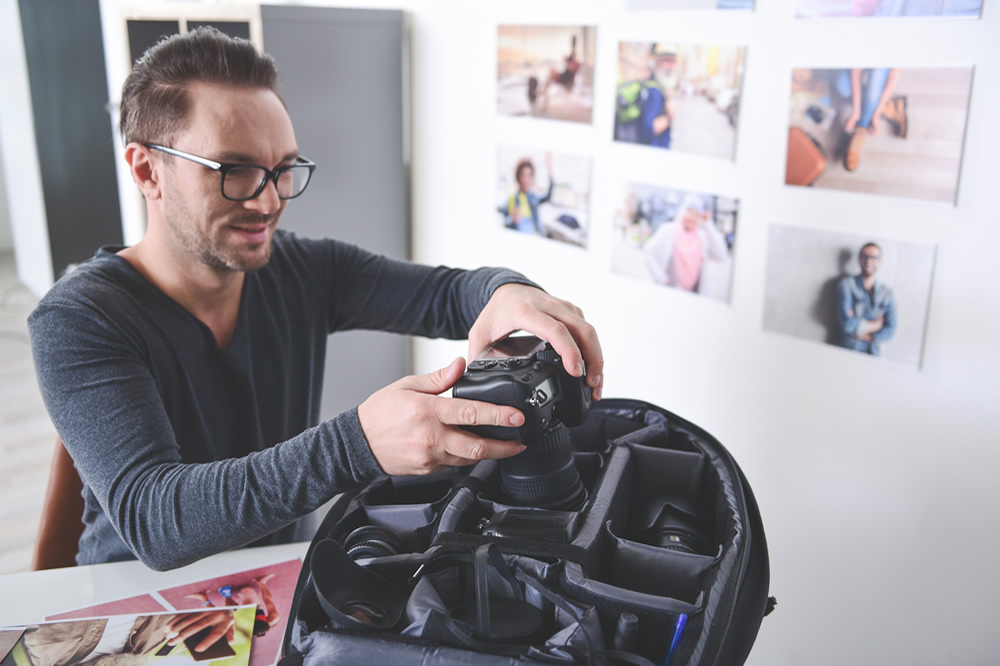How to Organize Your Camera Bag
Traveling with your camera equipment has its pros and cons. Whether you are a professional photographer or a regular person that enjoys vlogging, being able to take photos and record films while on the go is a great opportunity.
Still, it does come with certain risks, and there are precautions you want to take if you don’t want to end up with a few hundred or thousand dollars’ worth of damage.
While no one enjoys packing, it is a critical step in ensuring that your camera equipment will stay protected from damage and safe from theft.
Out of all the carrying options, the best one has to be a camera bag. Luckily for you, these are quite popular, so finding one in your budget range and with enough capacity for your needs shouldn’t be a problem.
On top of all that, if you are planning to travel by plane, most camera bags fit carry-on requirements (22 x 14 x 9 inches), so you will save on luggage space as well.
Not to forget, one of the best ways to spend your flying time is to look out the window searching for the beautiful shot of a sunset or sunrise at 10,000 meters above the ground.
The right camera bag should have an anti-theft pocket, a few separated compartments, and include ergonomic straps and a mesh back for a comfortable carrying experience. Bearing this in mind, we have prepared a number of tips on how to get the most of your camera bag space, so let’s take a look at how to organize your camera bag.
Leave More Than You Take
Excluding unnecessary equipment is a critical tip when it comes to organizing your camera bag. It is quite common that photographers pack more than they need, only to have a problem reorganizing and taking care of all the things they bring once they are on the flight.
The biggest mistake is taking too many lenses. While extra lenses are important, especially if you are going on a long trip, in most cases you will be fine with only a few. Taking 2 or 3 lenses will be more than enough for almost any adventure – don’t forget to wipe any dust and dirt on a regular basis and you will be fine.
Along with that, taking fixed instead of zoom lenses is a great tip if you are low on space. While zoom lenses are better for beginners, fixed DSLR lenses will make you invest more effort and time into your art, and you will probably find better angles for your shooting session.
When it comes to DSLR cameras, there is no need to take more than two bodies (if you are a professional photographer), as well as packing a small action camera like a GoPro to have along the way.
The Big Debate Point – Tripod
Taking a tripod on your adventure may provide you with fixed camera shots and better angles, but it is a large item, and in most cases, a single one may take half up of your available space.
Bearing this in mind, our recommendation is to exclude it unless your camera bag includes a flip front pocket on which you can attach a tripod. Leaving it at home will allow you to have some fun searching for natural replacements such as books, rocks, big branches, etc.
Don’t Forget About Camera Protection

If you were thinking about leaving your camera in its original box, don’t do it! First of all, the box itself will take up quite a bit of the storage space, while on the other hand, you are at risk to get robbed if someone sees it.
The best way to protect your camera and extra equipment for external damage is to add a layer of cushioned padding and put accessories such as film flashes, batteries, and SD cards in zipper storage bags.
Maximize on SD Cards and Batteries
By taking only two or three lenses, you will have more space for extra SD cards and batteries. Both of these will allow you to get more film time, as switching SD cards every few days is always a good thing, while an additional battery is nifty while out and about snapping photos or filming.
Conclusion
Packing for a trip, whether across the country or for a wedding photo shoot, doesn’t have to be a stressful experience – think rationally and pack only the necessary equipment focusing on quality rather than quantity.
Organize your camera bag in a neat, orderly way, with access to your batteries and lenses close at hand.
Pack fewer essential items in the zippered pockets. This way you always have quick access to your photo tools.

